(sold for $21.0)
1272, England, Henry III. Hammered Silver Long-Cross Penny Coin. Gloucester mint!
Mint Place: Gloucester
Mint Period: 1216-1272
Reference: North 988, SCBC 1364.
Moneyer: Roger Lenveyse (moneyer)
Denomination: Long-Cross Penny (Class IIIc)
Condition: Lightly deformed, minor deposits, otherwise F+
Diameter: 18mm
Material: Silver
Weight: 1.29gm
Obverse: Crowned and bearded bust facing, with sceptre in left hand, splitting legend.
Legend: ҺЄ(NR)ICVS RЄX : III ("King Henry III")
Reverse: Long-cross, splitting legend with four groups of triple pellets in fields.
Legend: ROG|(ЄR) O|N G|LOV ("Roger on Gloucester" = "Robert of Gloucester")
Henry was much taken with the cult of the Anglo-Saxon saint king Edward the Confessor who had been canonised in 1161. Told that St Edward dressed austerely, Henry took to doing the same and wearing only the simplest of robes. He had a mural of the saint painted in his bedchamber for inspiration before and after sleep and even named his eldest son Edward.
Henry III (1 October 1207 – 16 November 1272) was the son and successor of John of England as King of England, reigning for fifty-six years from 1216 to his death. His contemporaries knew him as Henry of Winchester. He was the first child king in England since the reign of Ethelred the Unready. England prospered during his century and his greatest monument is Westminster, which he made the seat of his government and where he expanded the abbey as a shrine to Edward the Confessor.
He assumed the crown under the regency of the popular William Marshal, but the England he inherited had undergone several drastic changes in the reign of his father. He spent much of his reign fighting the barons over Magna Carta and the royal rights, and was eventually forced to call the first "parliament" in 1264. He was also unsuccessful on the Continent, where he endeavoured to re-establish English control over Normandy, Anjou, and Aquitaine.
Henry III was born in 1207 at Winchester Castle. He was the son of King John and Isabella of Angoulême. The coronation was a simple affair, attended by only a handful of noblemen and three bishops. In the absence of a crown a simple golden band was placed on the young boy's head, not by the Archbishop of Canterbury (who was at this time supporting Prince Louis of France, the newly-proclaimed king of France) but rather by the Bishop of Gloucester. In 1220, a second coronation was ordered by Pope Honorius III who did not consider that the first had been carried out in accordance with church rites. This occurred on 17 May 1220 in Westminster Abbey.
Under John's rule, the barons had supported an invasion by Prince Louis because they disliked the way that John had ruled the country. However, they quickly saw that the young prince was a safer option. Henry's regents immediately declared their intention to rule by Magna Carta, which they proceeded to do during Henry's minority. Magna Carta was reissued in 1217 as a sign of goodwill to the barons and the country was ruled by regents until 1227.
In 1244, when the Scots threatened to invade England, King Henry III visited York Castle and ordered it rebuilt in stone. The work commenced in 1245, and took some 20 to 25 years to complete. The builders crowned the existing moat with a stone keep, known as the King's Tower.
Henry's reign came to be marked by civil strife as the English barons, led by Simon de Montfort, demanded more say in the running of the kingdom. French-born de Montfort had originally been one of the foreign upstarts so loathed by many as Henry's foreign counsellors. Henry, in an outburst of anger, accused Simon of seducing his sister and forcing him to give her to Simon to avoid a scandal. When confronted by the Barons about the secret marriage that Henry had allowed to happen, a feud developed between the two. Their relationship reached a crisis in the 1250s when de Montfort was brought up on spurious charges for actions he took as lieutenant of Gascony, the last remaining Plantagenet land across the English Channel. He was acquitted by the Peers of the realm, much to the King's displeasure.
Henry also became embroiled in funding a war in Sicily on behalf of the Pope in return for a title for his second son Edmund, a state of affairs that made many barons fearful that Henry was following in the footsteps of his father, King John, and needed to be kept in check, too. De Montfort became leader of those who wanted to reassert Magna Carta and force the king to surrender more power to the baronial council. In 1258, seven leading barons forced Henry to agree to the Provisions of Oxford, which effectively abolished the absolutist Anglo-Norman monarchy, giving power to a council of fifteen barons to deal with the business of government and providing for a thrice-yearly meeting of parliament to monitor their performance. Henry was forced to take part in the swearing of a collective oath to the Provisions of Oxford.
In the following years, those supporting de Montfort and those supporting the king grew more and more polarised. Henry obtained a papal bull in 1262 exempting him from his oath and both sides began to raise armies. The Royalists were led by Prince Edward, Henry's eldest son. Civil war, known as the Second Barons' War, followed.
The charismatic de Montfort and his forces had captured most of southeastern England by 1263, and at the Battle of Lewes on 14 May 1264, Henry was defeated and taken prisoner by de Montfort's army. While Henry was reduced to being a figurehead king, de Montfort broadened representation to include each county of England and many important towns—that is, to groups beyond the nobility. Henry and Edward continued under house arrest. The short period that followed was the closest England was to come to complete abolition of the monarchy until the Commonwealth period of 1649–1660 and many of the barons who had initially supported de Montfort began to suspect that he had gone too far with his reforming zeal.
But only fifteen months later Prince Edward had escaped captivity (having been freed by his cousin Roger Mortimer) to lead the royalists into battle again and he turned the tables on de Montfort at the Battle of Evesham in 1265. Following this victory savage retribution was exacted on the rebels.
Henry's reign ended when he died in 1272, after which he was succeeded by his son, Edward I. His body was laid, temporarily, in the tomb of Edward the Confessor while his own sarcophagus was constructed in Westminster Abbey.
Only 1$ shipping for each additional item purchased!

|
Posted by:
anonymous 2016-05-25 |
Tetradrachm Macedonian Kingdom (800BC-146BC) Silver Alexand ...
group has 202 coins / 195 prices
⇑






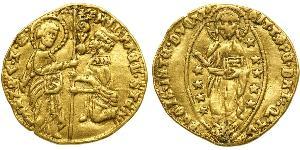



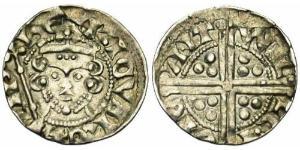
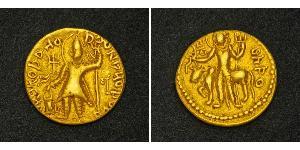

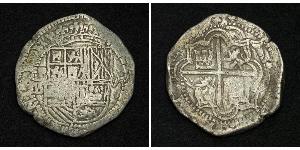
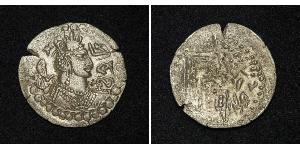
-300-150-iVYKbzbiO6MAAAFLcSj6AgfX.jpg)







